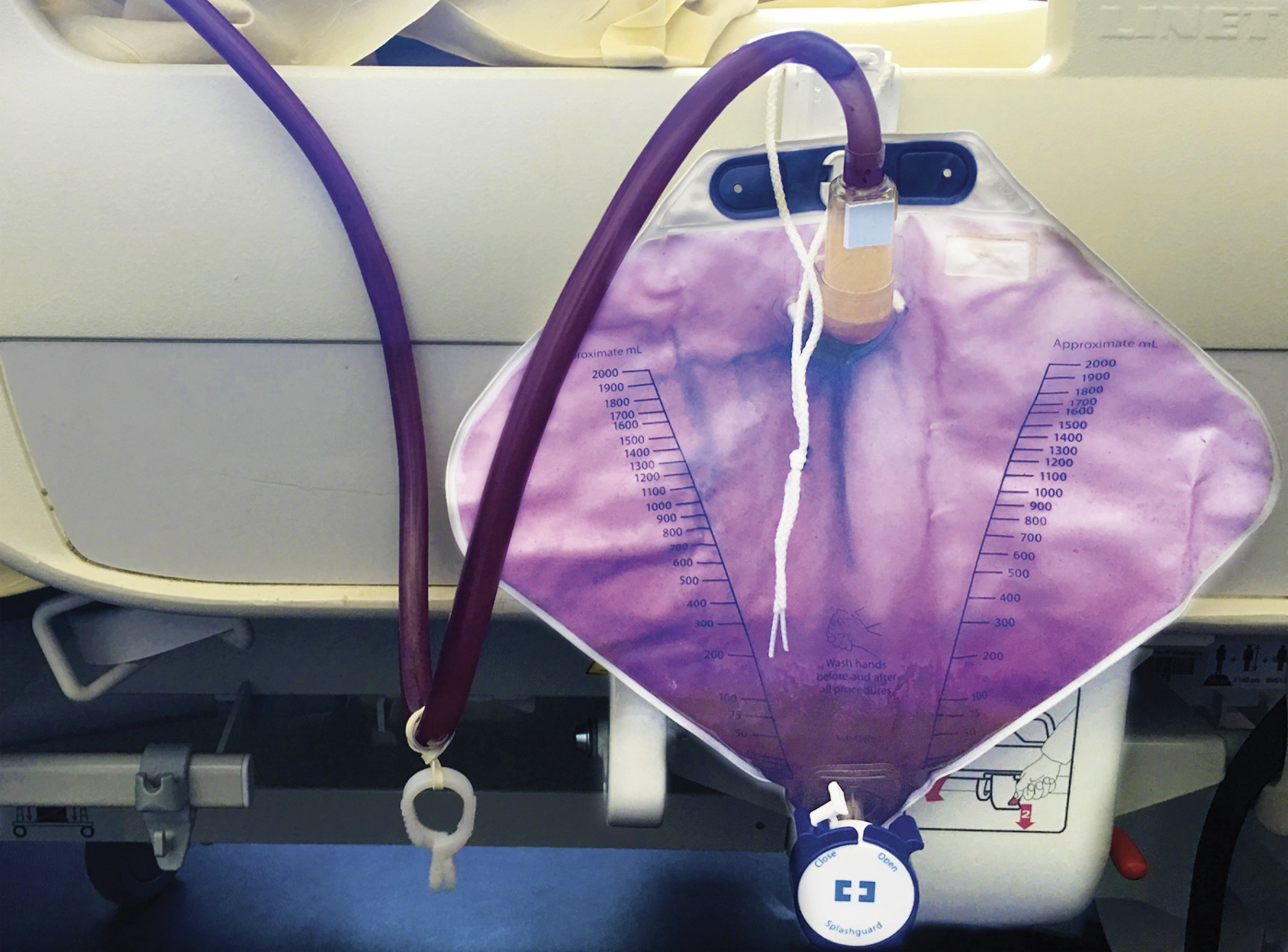What Turned This Woman's Pee a Striking Shade of Lilac?
A relatively rare chemical reaction can turn people's pee purple.

A woman who was hospitalized after having a stroke surprised doctors when, 10 days after being admitted, her pee turned purple.
Turns out, an unusual chemical reaction can transform urine from its usual yellow to a striking lilac. The bizarre phenomenon, described in a case report published today (Oct. 30) in the New England Journal of Medicine, may be fairly rare, but doctors have witnessed the anomaly enough times to give it a name, albeit not a very creative one.
"Purple urinary bag syndrome," or PUBS, first appeared in the medical literature back in 1978 and crops up in the occasional patient to this day, according to a 2013 review in the journal Annals of Long-Term Care. The prevalence of PUBS is unknown, but its appearance can be blamed on a combination of bacteria and tryptophan — that sleep-regulating chemical famously found in turkey.
Related: 11 Surprising Uses For Pee and Poop
PUBS usually manifests as a side effect of using a urinary catheter for an extended period, as a patient might during a hospital stay, according to a 2018 review in the journal BMJ Case Reports. Catheters, constructed from a tube and an attached bag, can be inserted to drain the bladder when patients can't do so themselves. In the case of the woman admitted to the Hôpital de Bicêtre in Le Kremlin Bicêtre, France, she had a catheter placed inserted because a stroke had left half her body weak and stiff.
When the patient's urinary bag took on the color of an eggplant, the doctors tested her pee for signs of suspicious bacteria. They found Klebsiella pneumoniae, a type of bacteria normally found in the human gut that can cause infections when relocated to other areas of the body, according to the Centers for Disease Control and Prevention. As these bacteria grew, the woman delivered tryptophan to the gut, as she was eating foods rich in the chemical, according to the report. As its processed by the gut and liver, tryptophan gets broken down into a chemical called "indoxyl sulfate," a key ingredient for purple pee.
Once expelled, the Klebsiella pneumoniae and indoxyl sulfate mix in the urinary bag. There, the bacteria split indoxyl sulfate into two new chemicals: One part red, one part blue. Together, the chemicals mix to make purple. Mystery solved!
Sign up for the Live Science daily newsletter now
Get the world’s most fascinating discoveries delivered straight to your inbox.
Usually, purple pee signals that a patient may have a urinary tract infection, according to a 2011 article in the Canadian Urological Association Journal. This was not the case with the French patient, her doctors noted; luckily, the patient's pee returned to its normal color after she was treated with intravenous hydration for a few days. The patient was then transferred to a long-term care facility, where doctors continued to treat the lingering effects of her stroke, her physicians reported.
- 27 Oddest Medical Cases
- 5 Things Your Poop Says About Your Health
- Poop Sausage to Pee Drinks: 7 Gross 'Human Foods'
Originally published on Live Science.


Nicoletta Lanese is the health channel editor at Live Science and was previously a news editor and staff writer at the site. She holds a graduate certificate in science communication from UC Santa Cruz and degrees in neuroscience and dance from the University of Florida. Her work has appeared in The Scientist, Science News, the Mercury News, Mongabay and Stanford Medicine Magazine, among other outlets. Based in NYC, she also remains heavily involved in dance and performs in local choreographers' work.










